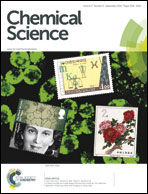A bivalent small molecule-drug conjugate directed against carbonic anhydrase IX can elicit complete tumour regression in mice†
Abstract
There is a pressing need for the development of innovative chemical drug delivery strategies in oncology, since conventional chemotherapeutic agents typically do not localise to solid tumours in vivo. It is widely accepted that bivalent antibody formats accumulate in tumours more strongly than monovalent ones and that they should thus be preferred for antibody-based pharmacodelivery approaches. For small molecule-drug conjugates this is less clear. Here, we show that a bivalent ligand against the tumour marker carbonic anhydrase IX leads to an improved tumour-targeting performance compared with the corresponding monovalent counterpart in the SKRC52 model of constitutively CAIX-positive renal cell carcinoma. A bivalent disulfide-linked small drug conjugate with the potent cytotoxic maytansinoid DM1 as the payload can mediate complete eradication of the same tumours, which are resistant to standard-of-care therapeutics, in a proportion of treated mice. In the A375 melanoma model, which preferentially expresses CAIX at sites distant to blood vessels, no measurable tumour accumulation could be observed. Our results suggest that the use of bivalent small molecule ligand-drug conjugates against CAIX may represent an attractive chemical strategy for the treatment of constitutively CAIX-positive kidney cancer.


 Please wait while we load your content...
Please wait while we load your content...